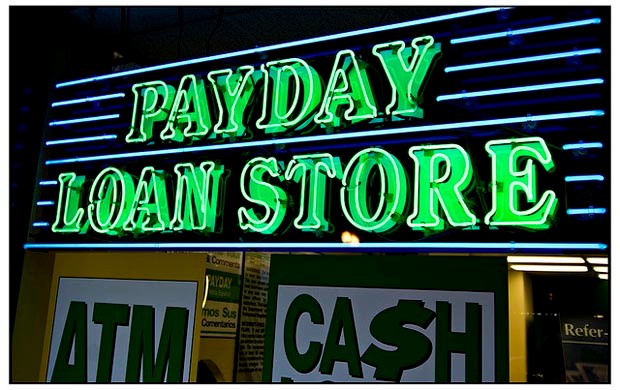
“Alternative financial services” (AFS), such as payday lenders, check cashers, and pawnshops, have expanded dramatically in recent decades, reshaping the American financial services landscape. In New York State, for example, the number of AFS increased from 2,428 in 1998 to 4,041 in 2015. Nationally, payday lenders are now more common than McDonald’s and Starbucks, combined—nearly one in four households will use an AFS each year.
Policymakers, inequality scholars, and advocates for the poor have long been concerned with AFS because they tend to be more expensive than “mainstream” banking. For example, using a check casher in lieu of a bank could cost tens of thousands of dollars over the course of a career. About half of people who take out payday loans end up paying more in interest and fees than the value of the initial loan, which suggests that these products can exploit economic insecurity and trap individuals in cycles of debt.
Despite the substantial growth of the AFS industry, which is now worth hundreds of billions of dollars, we know little about either its spread or its impact on communities. In what I believe to be the first national study of neighborhood-level AFS geography, I find that not only are there marked differences in AFS prevalence between white and non-white census tracts, but that racial disparities in exposure to these potentially-predatory institutions are widest in the most segregated metropolitan areas. These results support the idea that segregation creates local markets that are easy for institutional actors—such as financial service providers—to avoid and target.
Majority black or Latino neighborhoods have, on average, twice as many AFS as majority white neighborhoods. Not only are AFS more common in communities of color, but “mainstream” banks and credit unions are less common—while white census tracts average 1.8 banks or credit unions, black and Latino tracts have 0.7 and 0.9, respectively.
Alarmingly, the paper also shows that the black-white disparity in AFS presence is most dramatic within affluent neighborhoods, which is consistent with a wide body of work showing that African Americans are unable to leverage class resources for the same set of goods as white Americans. Majority black neighborhoods are the most likely to experience an additional marginalizing process of complete exclusion from any services—approximately one third of black tracts have neither mainstream nor alternative financial services, compared to one of four of non-black tracts.
Of course, exclusion from and exploitation through commerce are part of long history of the structural marginalization of people of color—a history that has been quite violent at times. In Nobody Knows My Name: More Notes of a Native Son, James Baldwin lamented that segregation of “captive populations” provided opportunities for economic victimization through higher prices for lower quality goods. David Caplovitz similarly argued that The Poor Pay More for durable consumer goods because of a system of sales and credit offered by local merchants in poor neighborhoods.
What is unique about contemporary AFS expansion is that is occurring in a context of dramatically increasing income inequality and instability, which intensify vulnerability to exploitation. Mainstream banking, which is often promoted as the “solution” to AFS use, has also become more expensive over time, with dramatic racial disparities in cost. When the FDIC asked people why they used AFS, the main reason cited was not having a bank account. When that same survey asked unbanked individuals why they didn’t have bank accounts, they cited the expense of banking. Furthermore, about half of AFS patrons reported using these high cost funds to cover basic living expenses and one in five said they were compelled to do so because of lost income. While the poor are forced to make hard choices about how to use their money, the affluent completely avoid these kinds of decisions through greater liquidity and geographic proximity to services.
The evidence increasingly suggests that both AFS and mainstream banking—together—foster spatially and racially organized “institutional marginalization,” which shapes the very cost of money (a “Ghetto Tax”). These disparities are even more severe when considered alongside parallel income inequalities—higher cost services in communities of color make already-lower wages even less valuable in communities of color. The geography of financial services presents a potential mechanism through which residential segregation perpetuates (or even widens) the racial wealth gap, as the tools Americans typically use to accumulate assets (e.g. home equity, retirement accounts, etc.) are completely out of reach without access to basic financial services.
Identifying solutions to these problems is a difficult task. Certainly, it is crucial to expand access to affordable financial products for the poor—for example, through programs like New York City’s SafeStart program or by offering low-cost services at post offices. Strengthening laws barring predatory lending could also help reduce the cost of short-term, small value loans such as payday loans.
However, these suggestions do not address the broader historical and contemporary, social and economic conditions that foster institutional marginalization. Economic vulnerability and segregation are central to understanding financial exclusion, so if we really cared about equal opportunity in access to financial services, we have to consider broader policies to reduce inequality, instability, and isolation.
Read more
Jacob William Faber, “Segregation and the Cost of Money: Race, Poverty, and the Prevalence of Alternative Financial Institutions,” Social Forces 2019.
Image: WikiMedia

No Comments